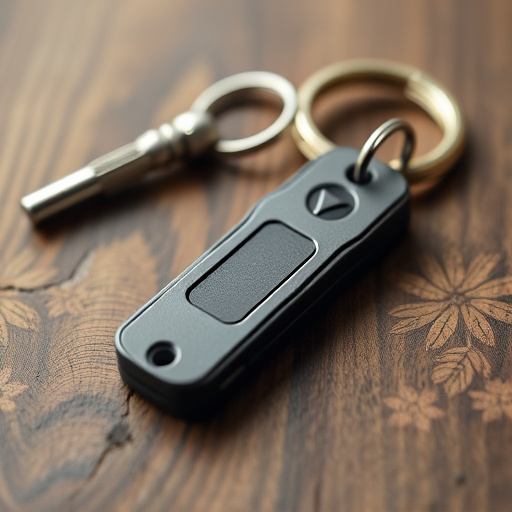Designing an effective Heart Attack Self Defense Keychain involves understanding common attack patterns and weak points in individuals' postures. Using robust materials like stainless steel or durable aluminum ensures functionality and durability. Ergonomic design for a comfortable, secure grip enhances safety during stressful situations. Incorporating hidden tools like flashlights and pocket knives boosts versatility, offering extra protection in diverse scenarios.
“Unleash your inner defender with a custom metal self-defense keychain—a stylish and practical tool for anyone seeking peace of mind. In this guide, we’ll navigate the art of creating an effective heart attack self-defense keychain. From understanding common assault tactics to selecting robust materials, you’ll master key design principles.
Learn about essential components, ergonomic grip designs, and hidden weapon integrations. Equip yourself with the knowledge to craft a keychain that offers not just style but also powerful defense options.”
- Understanding Your Target: Common Attacks and Their Weak Points
- Key Components: Choosing the Right Materials for Durability
- Ergonomics and Grip: Ensuring Comfort and Control in Handheld Combat
- Hidden Features: Incorporating Tools for Multiple Defenses
Understanding Your Target: Common Attacks and Their Weak Points
When designing a heart attack self defense keychain, understanding your target and their common attack patterns is paramount. Many everyday attacks, like grabs or stabs, often exploit weak points in an individual’s posture or movement. For instance, assailants may aim for the neck, wrists, or groin areas, where protection is usually less robust. By studying these vulnerabilities, you can develop a keychain grip that effectively counters such assaults.
Recognizing typical attack sequences and leveraging countermeasures ensures your self defense keychain isn’t just an accessory but a practical tool. This knowledge allows users to respond swiftly and effectively in potentially dangerous situations, enhancing their overall safety.
Key Components: Choosing the Right Materials for Durability
When designing a Heart Attack Self Defense Keychain, selecting robust materials is paramount for ensuring both its effectiveness and longevity. The keychain’s primary components, such as the grip section and the metal frame, should be crafted from high-quality alloys or steels known for their durability and resistance to wear and tear.
Consider using materials like stainless steel or durable aluminum alloys, which offer excellent strength-to-weight ratios. These choices not only make your self-defense keychain more reliable in emergency situations but also ensure it stands the test of time, even with frequent use.
Ergonomics and Grip: Ensuring Comfort and Control in Handheld Combat
Ergonomics play a significant role in self-defense keychain design, especially for those that feature a grip or are intended for handheld combat. A comfortable and secure grip allows users to maintain control during stressful situations, ensuring their safety and effectiveness. When crafting a heart attack self-defense keychain, consider the human hand’s natural curves and the distribution of weight. The keychain should fit snugly in the palm, with a non-slip surface that reduces fatigue, enabling quick and precise movements.
A well-designed grip can significantly enhance user experience, especially for individuals who might rely on the keychain as a last resort. Proper ergonomics not only provide comfort but also enable better control over the device, allowing users to utilize it effectively in various self-defense scenarios. This focus on usability ensures that the heart attack self-defense keychain remains a reliable tool when every second counts.
Hidden Features: Incorporating Tools for Multiple Defenses
Incorporating hidden features into your Heart Attack Self Defense Keychain design can significantly enhance its versatility and utility. Tools like a small flashlight, a window break tool, or even a pocket knife can be discreetly integrated into the keychain, offering more than just a traditional self-defense function. These added elements ensure that users have increased protection in various situations, from lighting up dark areas during emergencies to breaking through glass in confined spaces.
The strategic placement of these tools is key, ensuring they remain hidden yet easily accessible. A well-designed keychain with such features can provide a comprehensive defense mechanism, making it an invaluable asset for individuals seeking peace of mind and enhanced safety, especially when traveling or in unfamiliar environments.
When designing a heart attack self-defense keychain, it’s crucial to integrate sturdy materials, ergonomic grip, and concealed tools. By understanding common attacks, choosing durable components, and prioritizing comfort in your design, you can create an effective and discreet self-defense option. Incorporate hidden features for multiple defense strategies, ensuring users have peace of mind in potentially dangerous situations.
